The Intel Comet Lake Core i9-10900K, i7-10700K, i5-10600K CPU Review: Skylake We Go Again
by Dr. Ian Cutress on May 20, 2020 9:00 AM EST- Posted in
- CPUs
- Intel
- Skylake
- 14nm
- Z490
- 10th Gen Core
- Comet Lake
Socket, Silicon, Security
Editor's note: this page is mostly a carbon copy of our deep-dive covering the Comet Lake 10th Gen announcement, with some minor tweaks as new information has been obtained.
The new CPUs have the LGA1200 socket, which means that current 300-series motherboards are not sufficient, and users will require new LGA1200 motherboards. This is despite the socket being the same size. Also as part of the launch, Intel provided us with a die shot:
It looks very much like an elongated Comet Lake chip, which it is. Intel have added two cores and extended the communication ring between the cores. This should have a negligible effect on core-to-core latency which will likely not be noticed by end-users. The die size for this chip should be in the region of ~200 mm2, based on previous extensions of the standard quad core die:
CFL 4C die: 126.0 mm2
CFL 6C die: 149.6 mm2
CFL 8C die: 174.0 mm2
CML 10C die: ~198.4 mm2

Original 7700K/8700K die shots from Videocardz
Overall, Intel is using the new 10C silicon for the ten core i9 parts, as well as for the eight core i7 parts where those get dies with two cores disabled. Meanwhile for the six core i5 parts, Intel is apparently using a mix of two dies. The company has a native 6C Comet Lake-S design, but they're also using harvested dies as well. At this point it appears that the K/KF parts – the i5-10600K and i5-10600KF – get the harvested 10C design, while all of the rest of the i5s and below get the native 6C design.
For security, Intel is applying the same modifications it had made to Coffee Lake, matching up with the Cascade Lake and Whiskey Lake designs.
| Spectre and Meltdown on Intel | ||||||
| AnandTech | Comet Lake |
Coffee Refresh |
Cascade Lake | Whiskey Lake |
||
| Spectre | Variant 1 | Bounds Check Bypass | OS/VMM | OS/VMM | OS/VMM | OS/VMM |
| Spectre | Variant 2 | Branch Target Injection | Firmware + OS | Firmware + OS | Hardware + OS | Firmware + OS |
| Meltdown | Variant 3 | Rogue Data Cache Load | Hardware | Hardware | Hardware | Hardware |
| Meltdown | Variant 3a | Rogue System Register Read | Microcode Update | Firmware | Firmware | Firmware |
| Variant 4 | Speculative Store Bypass | Hardware + OS | Firmware + OS | Firmware + OS | Firmware + OS | |
| Variant 5 | L1 Terminal Fault | Hardware | Hardware | Hardware | Hardware | |
Box Designs
Intel has again chanced the box designs for this generation. Previously the Core i9-9900K/KS came in a hexagonal presentation box – this time around we get a window into the processor.
There will be minor variations for the unlocked versions, and the F processors will have ‘Discrete Graphics Required’ on the front of the box as well.
Die Thinning
One of the new features that Intel is promoting with the new Comet Lake processors is die thinning – taking layers off of the silicon and in response making the integrated heat spreader thicker in order to enable better thermal transfer between silicon and the cooling. Because modern processors are ‘flip-chips’, the bonding pads are made at the top of the processor during manufacturing, then the chip is flipped onto the substrate. This means that the smallest transistor features are nearest the cooling, however depending on the thickness of the wafer means that there is potential, with polishing to slowly remove silicon from this ‘rear-end’ of the chip.
In this slide, Intel suggests that they apply die thinning to products using STIM, or a soldered thermal interface. During our briefing, Intel didn’t mention if all the new processors use STIM, or just the overclockable ones, and neither did Intel state if die thinning was used on non-STIM products. We did ask how much the die is thinned by, however the presenter misunderstood the question as one of volume (?). We’re waiting on a clearer answer.
Overclocking Tools and Overclocking Warranties
For this generation, Intel is set to offer several new overclocking features.
First up is allowing users to enable/disable hyperthreading on a per-core basis, rather than a whole processor binary selection. As a result, users with 10 cores could disable HT on half the cores, for whatever reason. This is an interesting exercise mostly aimed at extreme overclockers that might have single cores that perform better than others, and want to disable HT on that specific core.
That being said, an open question exists as to whether the operating system is set up to identify if individual cores have hyperthreads or not. Traditionally Windows can determine if a whole chip has HT or not, but we will be interested to see if it can determine which of my threads on a 10C/15T setup are hyperthreads or not.
Also for overclocking, Intel has enabled in the specification new segmentation and timers to allow users to overclock both the PCIe bus between CPU and add-in cards as well as the DMI bus between the CPU and the chipset. This isn’t strictly speaking new – when processors were driven by FSB, this was a common element to that, plus the early Sandy Bridge/Ivy Bridge core designs allowed for a base frequency adjustment that also affected PCIe and DMI. This time around however, Intel has separated the PCIe and DMI base frequencies from everything else, allowing users to potentially get a few more MHz from their CPU-to-chipset or CPU-to-GPU link.
The final element is to do with voltage/frequency curves. Through Intel’s eXtreme Tuning Utility (XTU) and other third party software that uses the XTU SDK, users can adjust the voltage/frequency curve for their unlocked processor to better respond to requests for performance. For users wanting a lower idle power, then the voltage during idle can be dropped for different multiplier offsets. The same thing as the CPU ramps up to higher speeds.
It will be interesting to see the different default VF curves that Intel is using, in case they are per-processor, per-batch, or just generic depending on the model number. Note that the users also have to be mindful of different levels of stability when the CPU goes between different frequency states, which makes it a lot more complicated than just a peak or all-core overclock.
On the subject of overclocking warranties, even though Intel promotes the use of overclocking, it isn’t covered by the standard warranty. (Note that motherboard manufacturers can ignore the turbo recommendations from Intel and the user is still technically covered by warranty, unless the motherboard does a technical overclock on frequency.) Users who want to overclock and obtain a warranty can go for Intel’s Processor Protection Plans, which will still be available.
Motherboards, Z490, and PCIe 4.0 ??
Due to the use of the new socket, Intel is also launching a range of new motherboard chipsets, including Z490, B460, and H470. We have a separate article specifically on those, and there are a small number of changes compared to the 300 series.
The two key features that Intel is promoting to users is support for Intel’s new 2.5 GbE controller, the I225-V, in order to drive 2.5 gigabit Ethernet adoption. It still requires the motherboard manufacturer to purchase the chip and put it on the board, and recent events might make that less likely – recent news has suggested that the first generation of the I225 silicon is not up to specification, and certain connections might not offer full speed. As a result Intel is introducing new B2 stepping silicon later this year, and we suspect all motherboard vendors to adopt this. The other new feature is MAC support for Wi-Fi 6, which can use Intel’s AX201 CNVi RF wireless controllers.
One big thing that users will want to know about is PCIe 4.0. Some of the motherboards being announced today state that they will support PCIe 4.0 with future generations of Intel products. At present Comet Lake is PCIe 3.0 only, however the motherboard vendors have essentially confirmed that Intel’s next generation desktop product, Rocket Lake, will have some form of PCIe 4.0 support.
Now it should be stated that for the motherboards that do support PCIe 4.0, they only support it on the PCIe slots and some (very few) on the first M.2 storage slot. This is because the motherboard vendors have had to add in PCIe 4.0 timers, drivers, and redrivers in order to enable future support. The extra cost of this hardware, along with the extra engineering/low loss PCB, means on average an extra $10 cost to the end-user for this feature that they cannot use yet. The motherboard vendors have told us that their designs conform to PCIe 4.0 specification, but until Intel starts distributing samples of Rocket Lake CPUs, they cannot validate it except to the strict specification. (This also means that Intel has not distributed early Rocket Lake silicon to the MB vendors yet.)
So purchasing a Z490 motherboard with PCIe 4.0 costs users more money, and they cannot use it at this time. It essentially means that the user is committing to upgrading to Rocket Lake in the future. Personally I would have preferred it if vendors made the current Z490 motherboards be the best Comet Lake variants they could be, and then with a future chipset (Z590?), make those the best Rocket Lake variants they could be. We will see how this plays out, given that some motherboard vendors are not being completely open with their PCIe 4.0 designs.


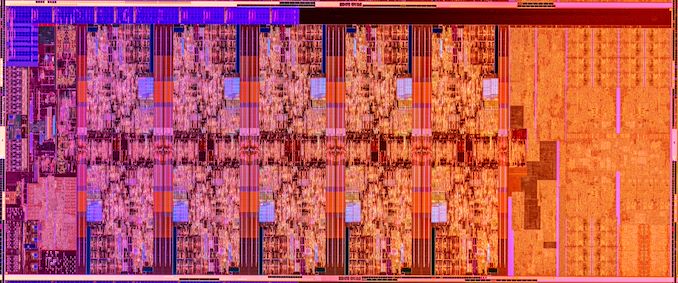
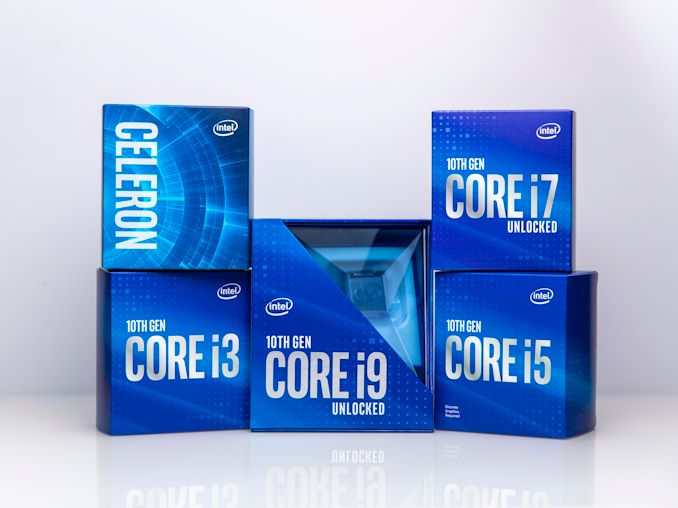
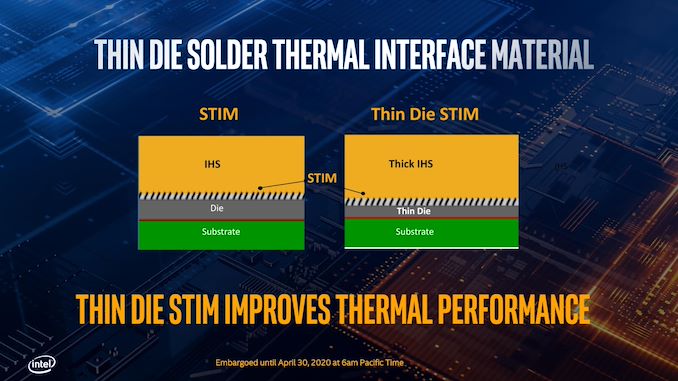
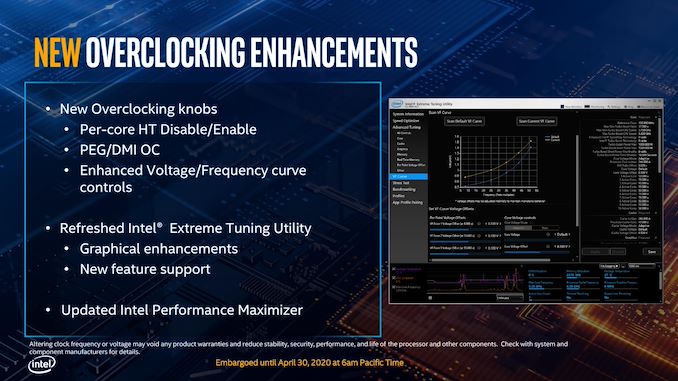
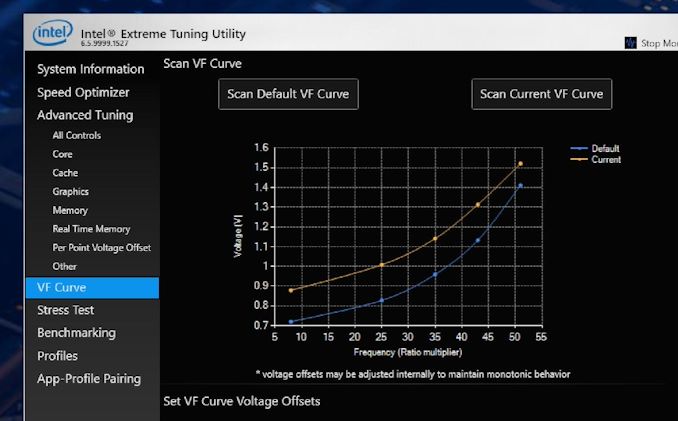
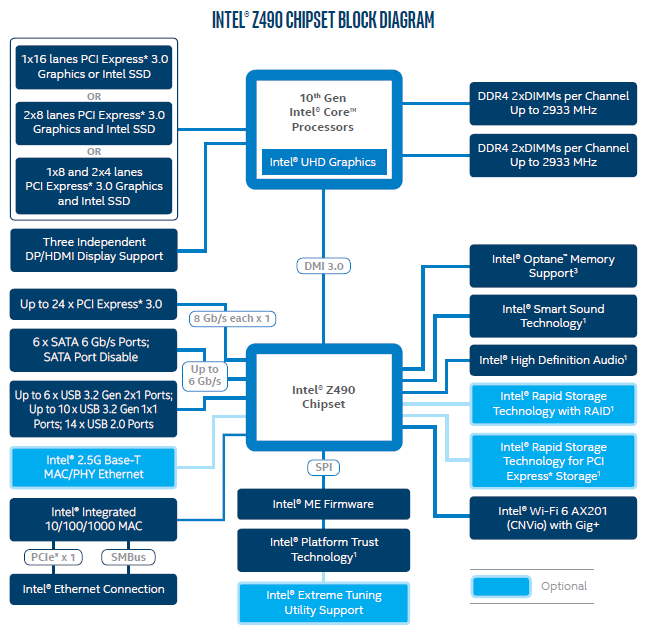
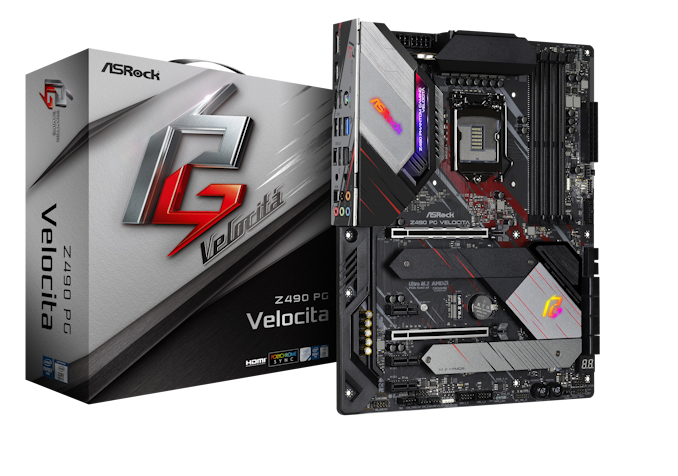








220 Comments
View All Comments
Khenglish - Wednesday, May 20, 2020 - link
Ian, for the Crysis CPU render test you'd probably get higher FPS disabling the GPU in the device manager and set Crysis to use hardware rendering. Disabling the GPU driver enables software rendering by default on Windows 10. The Win10 rendering does stutter worse than the reported FPS though, so take from it what you want.shaolin95 - Wednesday, May 20, 2020 - link
"But will the end-user want that extra percent of performance, for the sake of spending more on cooling and more in power?"Such retarded comment. More power...do you actually know who little difference this makes in a year. Wow this place is going down hill fast.
Oh and a cooler you know we don't have to change our cooler with every CPU purchase so don't make it seem like this HUGE issue...your AMD fanboy colors are showing VERY clearly.
schujj07 - Wednesday, May 20, 2020 - link
If you think you can use the 212 EVO you have from a 6700k or 7700k to keep the 10900k cool you are absolutely nuts. "Speaking with a colleague, he had issues cooling his 10900K test chip with a Corsair H115i, indicating that users should look to spending $150+ on a cooling setup. That’s going to be a critical balancing element here when it comes to recommendations." This isn't any form of fanboyism. This is stating a fact that to squeeze out the last remaining bits of performance in Skylake & 14nm Intel had to sacrifice massive amounts of heat/power to do so.Maxiking - Wednesday, May 20, 2020 - link
If you have issues cooling 10900k with H115i, the problem is always between the monitor and chair.They were able to cool OC 10900k with 240m AIO just lol
Incompetency of some reviewers is just astonishing
schujj07 - Wednesday, May 20, 2020 - link
All depends on the instructions that you are running. From Tomshardware: "We tested with the beefier Noctua NH-D15 and could mostly satisfy cooling requirements in standard desktop PC applications, but you will lose out on performance in workloads that push the boundaries with AVX instructions. As such, you'll need a greater-than-280mm AIO cooler or a custom loop to unlock the best of the 10900K. You'll also need an enthusiast-class motherboard with beefy power circuitry, and also plan on some form of active cooling for the motherboard's power delivery subsystem." https://www.tomshardware.com/reviews/intel-core-i9..."While Intel designed its 250W limit to keep thermals 'manageable' with a wide variety of cooling solutions, most motherboard vendors feed the chip up to ~330W of power at stock settings, leading to hideous power consumption metrics during AVX stress tests. Feeding 330W to a stock processor on a mainstream motherboard is a bit nuts, but it enables higher all-core frequencies for longer durations, provided the motherboard and power supply can feed the chip enough current, and your cooler can extract enough heat.
To find the power limit associated with our chip paired with the Gigabyte Aorus Z490 Master motherboard, we ran a few Prime95 tests with AVX enabled (small FFT). During those tests, we recorded up to 332W of power consumption when paired with either the Corsair H115i 280mm AIO watercooler or a Noctua NH-D15S air cooler. Yes, that's with the processor configured at stock settings. For perspective, our 18-core Core i9-10980XE drew 'only' 256W during an identical Prime95 test." https://www.tomshardware.com/reviews/intel-core-i9...
Think it is still a pebkac error?
alufan - Thursday, May 21, 2020 - link
try this he doesn't slate the intel or amd just a proper review with live power draw at the socket OMG lol you need your won power plant when you run these let alone over clock ithttps://www.kitguru.net/components/leo-waldock/int...
Spunjji - Tuesday, May 26, 2020 - link
"They were able to cool OC 10900k with 240m AIO just lol"Who were? Everyone I've read indicates that with a 240mm AIO, CPU temps hit 90+
Pathetic comment troll is pathetic.
Retycint - Wednesday, May 20, 2020 - link
It is, in fact, a huge issue because most people won't have high end coolers necessary to keep the thermals under control. Personal attacks such as accusing people of being a "fanboy" just degrades your argument (if there was any in the first place) and make you look dumbSpunjji - Tuesday, May 26, 2020 - link
"Such retarded comment."The pure, dripping irony of using a slur to mock someone else's intelligence, but screwing up the grammar of the sentence in which you do it...
Some people build from scratch. Some people have uses for their old system. larger PSUs and suitable cooling to get optimal performance from this CPU don't come cheap. Go home, troll.
watzupken - Wednesday, May 20, 2020 - link
Not surprising, Intel managed to keep their advantage in games by pushing for higher frequency. However the end result is a power hungry chip that requires some high end AIO or custom water cooler to keep cool. I agree that Intel is digging themselves deeper and deeper into a hole that they will not be able to get out so easily. In fact I don't think they can get out of it until their 7nm is ready and mature enough to maintain a high frequency, or they come out with a brand new architecture that allows them to improve on Comet Lake's performance without the crazy clockspeed. Indeed, they will not be able to pull another generation with their Skylake + 14nm combination looking at the power consumption and heat generation issue. Intel should consider bundling that industrial chiller they used to cool their 20 core chip during the demo.